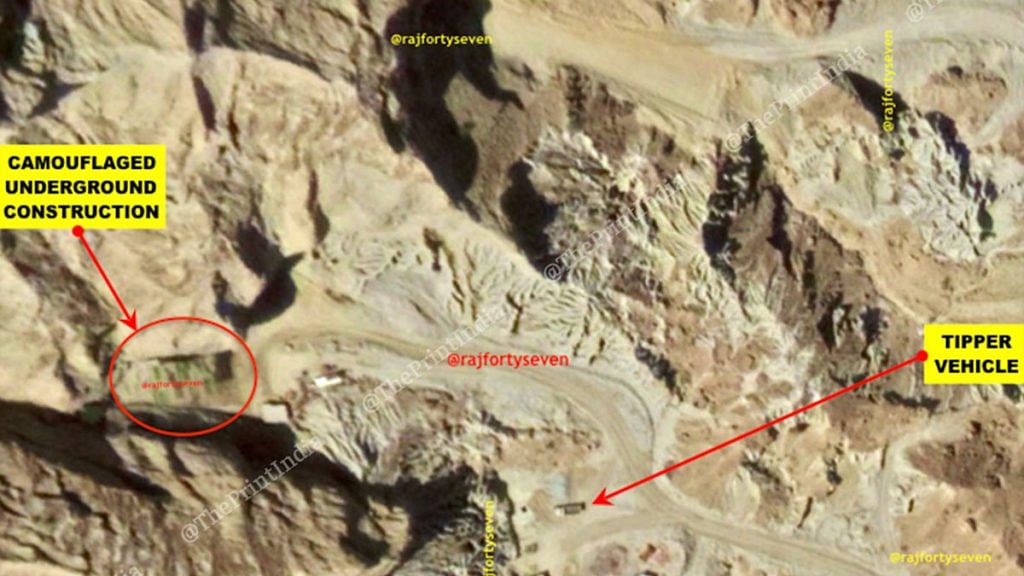New Delhi: While Pakistan’s Army gets all the attention within and outside the country, its navy has its fair share of strategic assets too, and has been expanding with Chinese assistance in every field.
One of the biggest expansions has taken place at the Arabian Sea port of Ormara in Gwadar district of Balochistan province, about 350 km west of Karachi, which is supposed to be a storage facility for the nuclear capable Hatf-VII/Babur missile.
Satellite images suggest that the entire facility, once complete, will likely cater to a regiment of Babur coastal missile systems on tractor erector launchers (TELs).
ThePrint takes an exclusive look at the expansion.
Also read: Pakistan & China are building an SEZ in PoK’s Gilgit-Baltistan, satellite images show
Location and construction
The storage facility, mostly constructed overground, is located at the hammerhead-shaped peninsula in Ormara. Construction began in the first half of 2009, and has proceeded in different phases till date.
The slow pace is probably to avoid detection, which would be visible in the case of a fast-paced programme.
By 2018, the 25-acre area originally covered by the facility was expanded to 425 acres, boxed in by an external fence.
Latest satellite images now show that the external fence now occupies an area of almost 1,000 acres, covering almost the entire hammerhead of Ormara.
The open area is possibly being prepared for launch positions, but it has not yet been fenced completely.
Also read: The China-Pakistan Economic Corridor has a weak link, satellite images show
Storage bunkers
There are two main storage bunkers, with an internal size of 10m x 25m. The bunkers, like most overground nuclear ammunition bunkers, have a sloped wall covering of compressed earth, at a 60-degree slant.
The top is also covered with compressed earth. It also has a small chimney-like opening for environmental conditioning.
The bunkers were constructed in 2009 and had their main entrances automated as late as 2017. The gates seem to be almost a metre thick.
The size of these two storage bunkers indicate that they could probably be holding about eight TELs of the Babur coastal missile system, with a range of approximately 750 km.
Also read: The China-Pakistan ‘nexus’ to exploit tons of gold from the mines of Balochistan
Recent expansions
Recent construction activities show a newly-built highbay garage, which has regularly been upgraded with an air conditioning plant, and an additional porch-type protruding shed.
Two more buildings can be observed, which could be motor transport garages. There is an additional hard standing created for temporary parking of vehicles.
The latest images from October 2019 show the hard standing covered by tin-roofed shed.
There are four large buildings to the west of the original storage facility. Two of these are very similar to storage buildings observed elsewhere in Pakistan’s nuclear storage facilities. The size of the two buildings suggests that they could possibly store about a regiment-sized missile force.
The other two buildings are probably for support vehicles and other facilities.
At four locations, some kind of underground work is in progress. It is, however, not possible to identify them with the images available, as they are covered with camouflage netting.
There could also be a cut-and-cover type of construction being planned.
Security
The facility is surrounded by tall wire fences in at least five layers, interspersed with tall watch towers.
The two main bunkers have special guard posts around them, along with internal double fencing. As mentioned above, the entry at the bunkers is automated with at least a metre-thick gates.
All the buildings are connected with the central command post and with each other through underground cabling and electricity connections.
The road entry point has been beefed up with seven layers of obstacles, with watch towers at both ends. There are three vehicle entry barriers beyond the seven road barriers.
Also read: Image shows possible accident near Pakistani nuclear weapons facility after Balakot
